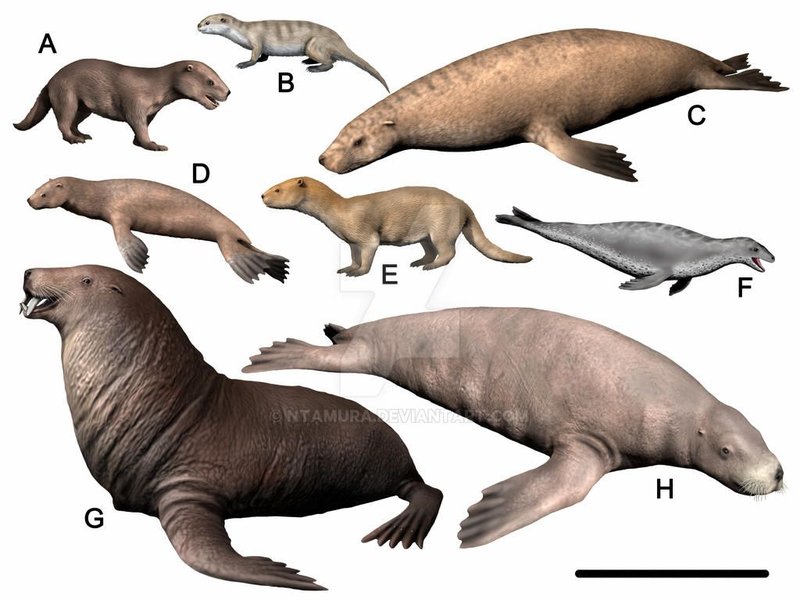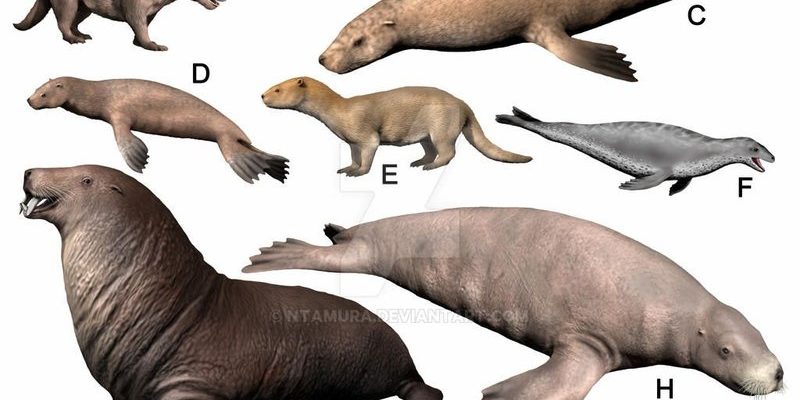
Imagine that the sea lion is a character in a long, epic saga—a tale that stretches back millions of years. To understand how they got to where they are today, we’ll dive into their ancestry, physical characteristics, behaviors, and how they interact with their environment. By the end, you’ll see sea lions not just as delightful marine mammals but as a product of a remarkable evolutionary story.
What Are Sea Lions?
Sea lions are part of the family *Otariidae*, which includes other pinnipeds like fur seals. Unlike other seals, sea lions have external ear flaps, and they can rotate their hind flippers forward, allowing them to walk on land more easily. They are known for their playful nature and intelligence, making them a popular sight at zoos and aquariums.
You might be wondering, “What differentiates sea lions from other marine mammals?” In short, their social behavior and physical traits set them apart. Most sea lions live in large colonies, coming ashore to breed, mate, and care for their young. This social structure is crucial for their survival, as they rely on group dynamics for protection against predators.
Sea lions are found primarily along the coasts of North America, South America, and parts of Asia. They thrive in various environments, from rocky shores to sandy beaches, demonstrating their adaptability. With a keen sense of hearing and excellent swimming abilities, these mammals are built for life in the ocean.
The Ancestry of Sea Lions
To understand sea lions and their evolutionary journey, we need to look back in time. Their ancestors likely resided on land about 25 million years ago. They are believed to have evolved from a group of land-dwelling carnivores known as *caniforms*, which eventually adapted to a marine lifestyle.
The transition from land to sea is a significant chapter in the sea lion’s story. As they adapted to life in the water, they developed features such as streamlined bodies and powerful flippers, essential for swimming. They also evolved specialized hunting techniques to catch fish and squid, their primary food sources. This adaptability to aquatic life allowed them to thrive while other land mammals struggled.
Interestingly, genetics plays a fascinating role in their evolution. Research shows that sea lions are closely related to bears and weasels, highlighting the surprising connections between different animal groups. This shared ancestry emphasizes how evolution can take diverse paths, leading to unique adaptations based on environmental needs.
Physical Characteristics
Sea lions have distinct physical traits that emphasize their adaptations to both land and water. They typically weigh between 300 to 800 pounds, with males being larger than females. Their thick layer of blubber keeps them warm in cold waters, while their fur provides additional insulation.
One of the most noticeable features is their external ear flaps, which set them apart from true seals. Their front flippers are long and flexible, allowing for agile movement both in the water and on land. When you see a sea lion “walk,” it’s quite a unique sight! They can rotate their hind flippers forward, making them better suited for navigating rocky shores.
Their large eyes and keen eyesight help them spot prey underwater. Plus, they have excellent hearing, which is crucial for communication within their colonies. During mating season, male sea lions vocalize loudly to assert their dominance and attract females. It’s quite a symphony of barks, roars, and growls!
Behavior and Social Structure
Sea lions are social animals, often found in large groups or colonies. These colonies can range from just a few individuals to hundreds or even thousands of sea lions. Living in groups helps them protect themselves from predators and provides a supportive environment for raising their young.
Males, known as bulls, establish territories during the breeding season, where they fight for dominance and the right to mate with females. It’s a bit like a competitive sport! Once a territory is established, bulls gather harems of females. They’re quite the charismatic leaders!
Female sea lions, or cows, usually give birth to one pup at a time after a gestation period of about 11 months. Mothers are incredibly caring, nursing their pups with rich milk and teaching them essential survival skills. The pups are born with a dark, furry coat that gradually lightens as they grow. The bond between mother and pup is crucial for the latter’s survival in the wild.
Sea Lions in Their Environment
The environment plays a massive role in shaping sea lion behavior and adaptations. They are often found in coastal areas with rocky outcrops, where they can rest and breed. Their choice of habitat is influenced by the availability of food and safety from predators like sharks and orcas.
Sea lions are agile swimmers and can dive to impressive depths in search of food. They primarily feast on fish, squid, and crustaceans, using their whiskers to detect movement in the water. When hunting, they can hold their breath for up to 20 minutes, showcasing their incredible adaptation to the marine environment.
Climate change and human activity pose significant threats to their habitats, which can affect food availability and breeding grounds. Conservation efforts are vital to preserving their populations and ensuring they continue to thrive in their natural settings. By creating marine protected areas and regulating fishing practices, we can help secure a healthier environment for these amazing creatures.
The Role of Sea Lions in the Ecosystem
Sea lions play a crucial role in marine ecosystems. As predators, they help maintain the balance of the populations of fish and other sea creatures. By controlling these populations, they contribute to the overall health of the ocean environment. This dynamic illustrates how interconnected different species are, and how the removal or decline of one species can impact the entire ecosystem.
Their waste also adds nutrients to the ocean, supporting the growth of phytoplankton and other foundational species in the food web. Healthy sea lion populations contribute to vibrant marine ecosystems, emphasizing the importance of conservation efforts.
Unfortunately, sea lions face threats from pollution, habitat loss, and climate change. Human actions can disrupt their feeding patterns and breeding behaviors, leading to declines in their populations. Protecting their habitats and ensuring sustainable fishing practices is vital for their future and the health of our oceans.
The Future of Sea Lions
As we move forward, the future of sea lions hangs in the balance. While they are currently listed as a species of “Least Concern” by conservation organizations, their populations can fluctuate due to environmental changes. It’s essential to keep an eye on their numbers and habitats to ensure they don’t face critical threats.
Conservation efforts, such as creating marine protected areas and educating the public about their importance, are crucial. Organizations are actively working to monitor sea lion populations and advocate for policies that protect their environments. You can help by supporting these initiatives and spreading the word about the importance of marine life conservation.
Ultimately, the journey of sea lions is a testament to resilience and adaptability. These creatures have evolved over millions of years to thrive in their environments, and it is our responsibility to ensure they continue to do so for generations to come. By respecting their habitats and advocating for their protection, we can play a part in this fascinating evolutionary story.
In summary, the evolutionary journey of the sea lion is more than just a tale of adaptation; it’s a reminder of our responsibility to protect the natural world around us. Let’s ensure that the next chapter in this story is filled with hope, thriving populations, and healthy oceans.

